
Natural Choice to a Prime heritage
Idaho’s Rutan family awarded CAB Commercial Commitment to Excellence
Story and photos by Morgan Marley Boecker
September 2020
“Feed your cows and don’t lie to your banker.”
Walt Morgan lived by those words and his well-honed Western wit. The first owner of Morgan Ranches doesn’t ride the South Mountain, Idaho, range anymore, but his spirit lives on in today’s owner-managers David and Ann Rutan.
That saying can be found in a shadow box with a few of Walt’s personal possessions, a constant reminder to take care of business and uphold integrity.
“If you are not as good as your word, if you do not have integrity, then your business is not going to make it,” Ann says.
They learn and teach through words of wisdom gathered over the decades.
“Change is inevitable, success is optional,” David says to lead into some examples. “If you think it’s going to be hard, you’re right. The same is true for the good “—it all comes down your attitude and outlook for each day.”
That positive philosophy applied to everything from good morning to great cattle only begins to tell why Morgan Ranches earned the 2020 Certified Angus Beef Commercial Commitment to Excellence award.
There’s a difference between “hard work” and “good work,” Ann says. And they take pride in the good work they do every day.
Good hands
David and Ann haven’t always been at Morgan Ranches but families united there. They got married at 40, around the same time Walt and his wife Grace asked David to return to the ranch where he worked for them a decade earlier. Both had kids of their own, but the opportunity was perfect timing for something new as they started their life together.
“You have to have a dream and a passion and you have to believe you’re put here for a reason,” David says. “I think I was put here to raise food for people.”
Not long after they settled in at the ranch, Walt lost Grace–his trusted business partner of 50 years. She was dedicated to building their horses, land and cattle, and invested time with Ann teaching her “the ropes.”
Three years later, Walt left this world after battling cancer. He and Ann grew close when she drove him to chemotherapy three times a week on a 200-mile round trip. He never stopped baling hay, branding calves or caring for “his girls” through those days and that grit and perseverance still inspire the Rutans.
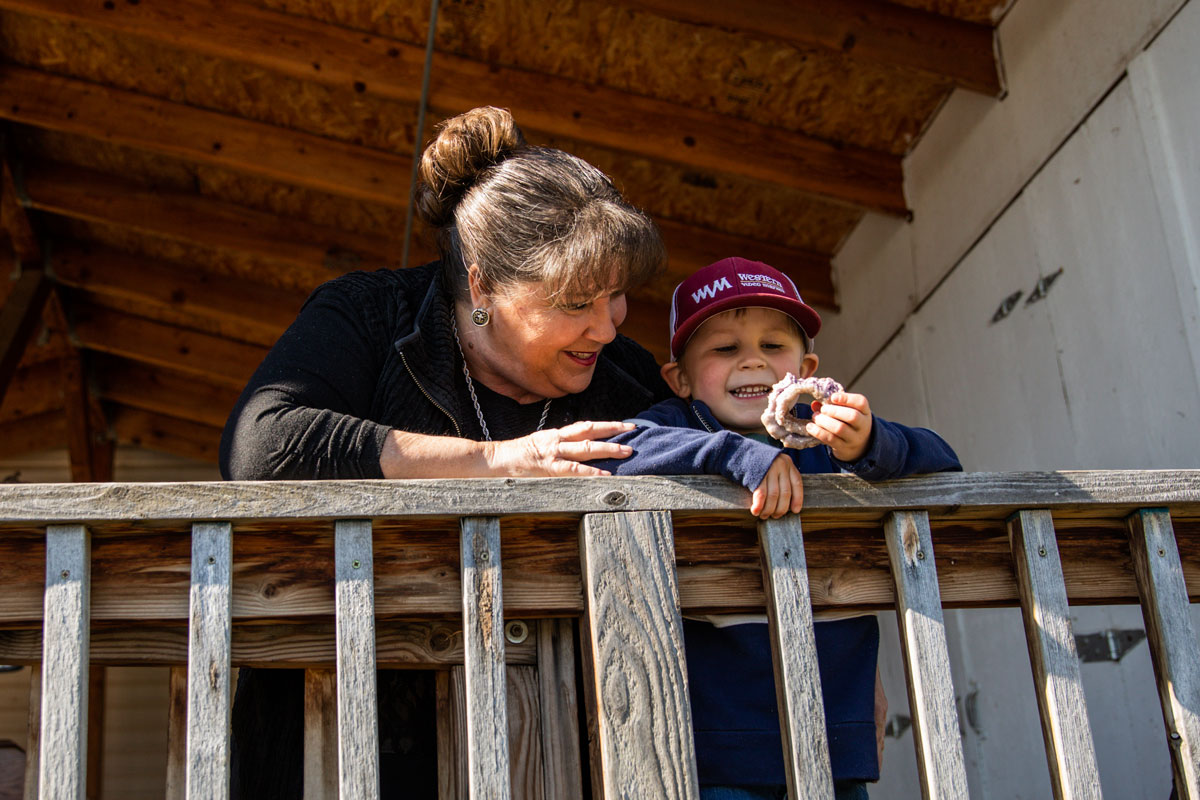
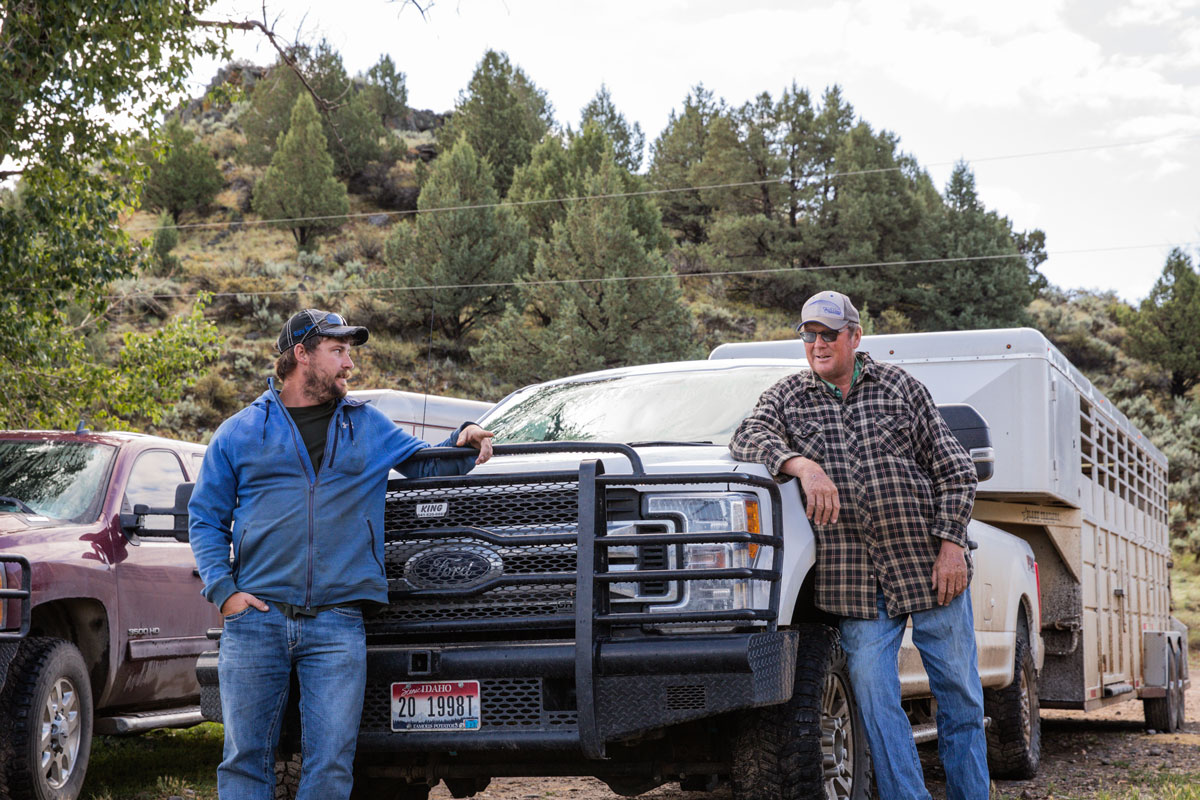
Today, David, Ann and two of their sons work the ranch full time.
“You’ve got the business and you’ve got the family,” Ann says. “You have to keep them separate, and yet you have to weigh them together.”
Each one brings their own strengths to keep it running smoothly.
“David does all the work for the programs and together we do the entailed paperwork,” Ann says. “I pay the bills and handle the banking, while our daughter-in-law Christina does the computer work.”
“We’ve figured out who wants to be here and how we’re going to make it work,” David says. “I think the future is in good hands.”
“You can’t teach desire,” he adds. It takes a vested interest to trust the hands doing the work and making decisions.
Sometimes that interest stands out
Like the time a group of calves needed to go through the chute to collect electronic ID numbers. Christina scanned tags and recorded the numbers in the morning and that evening delivered her son. It’s a memory they all laugh at today but with a deeper, shared understanding of the commitment and desire it takes to run a successful business.
“We have to control the things we can,” David says, while understanding the things we just can’t.
The day they had the longest and hardest cattle drive of the year, the sky opened up and dropped more than a tenth of the year’s 14 inches of precipitation. The cows had to move to higher country for the summer—and Ann had prime rib and a fire ready for the soaked crew of sons, daughters-in-law and grandkids that afternoon.
The family finds motivation in their faith, even on the bad days when Ann reminds David, “He owns the cattle on a thousand hills.” The land owns them, and they’re just caring for the cattle.
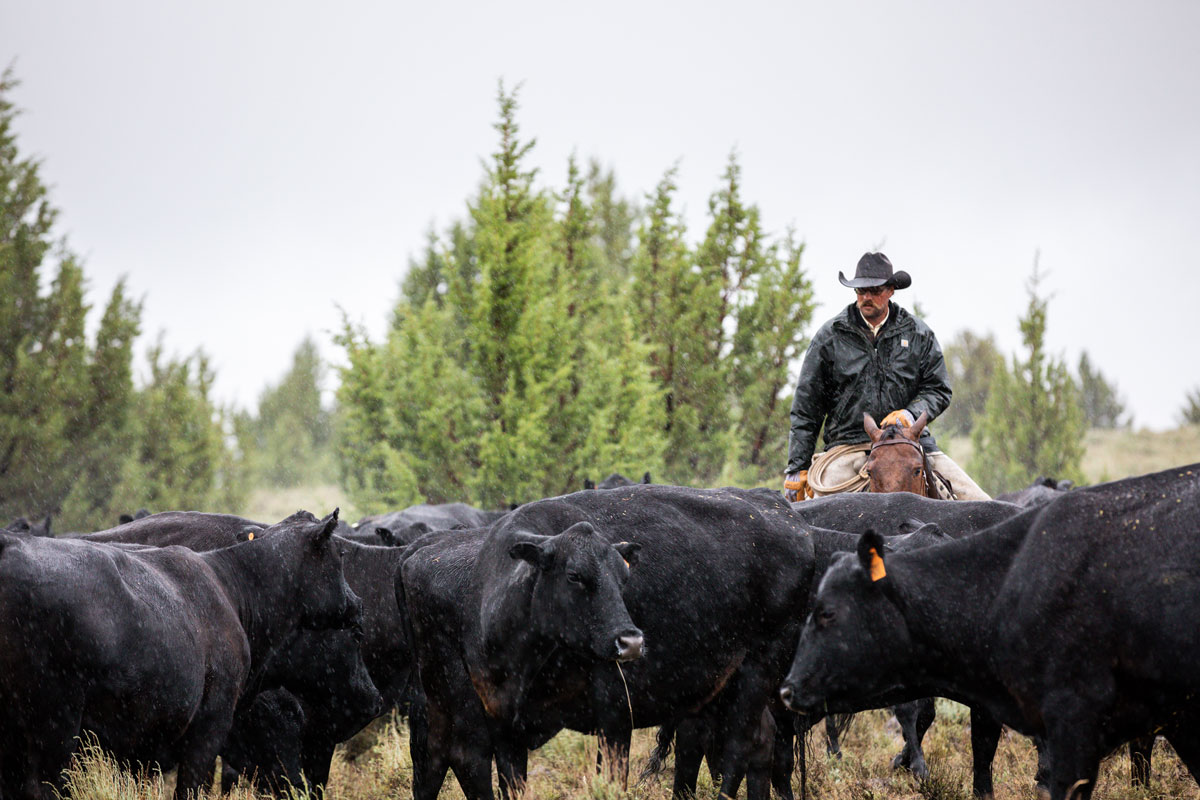
Find your kind
Heading south out of Boise on highway 95, cell-phone service bars drop fast. The roads begin to wind through the foothills and there’s more cow-crossing signs than wildlife the closer it brings you to Jordan Valley, Ore.
“It may not be the best country, but if you have enough of it, a cow will do pretty good,” David says. And they have enough in Idaho and Oregon, between what they own, leased state land and federal Bureau of Land Management.
Spared from tornadoes, hurricanes and humidity, this high desert country manages to give its residents all four seasons–sometimes in weeks or days—so cattle have to adapt quickly.
Angus cows work here.
Their herd of 700 makes a living by turning low-quality forage into high-quality beef, thanks to supporting genetics. Strict criteria define bull-buying decisions and only the top 10% make the cut when it comes time to bid at the Spring Cove Ranch sale.
“I’m kind of an Angus guy,” David proclaims. “I feel like there’s not a lot of point in buying commercial bulls when you can get everything you want with Angus.”
This wasn’t always the case on the ranch, seeing as Walt took to Herefords.
“Walt and David shared a lot of the same philosophies in cattle,” Ann says. “He learned a lot from Walt. But Walt always had a saying: ‘A man should raise the kind of cows he likes.’”
It didn’t take David long to make the switch to his “kind.”
“We want a balanced approach where we’re still making a good female,” he says, “because we’re trying to raise all our own replacements.”
“I know you can build a good cow and still have a good carcass,” he reports.

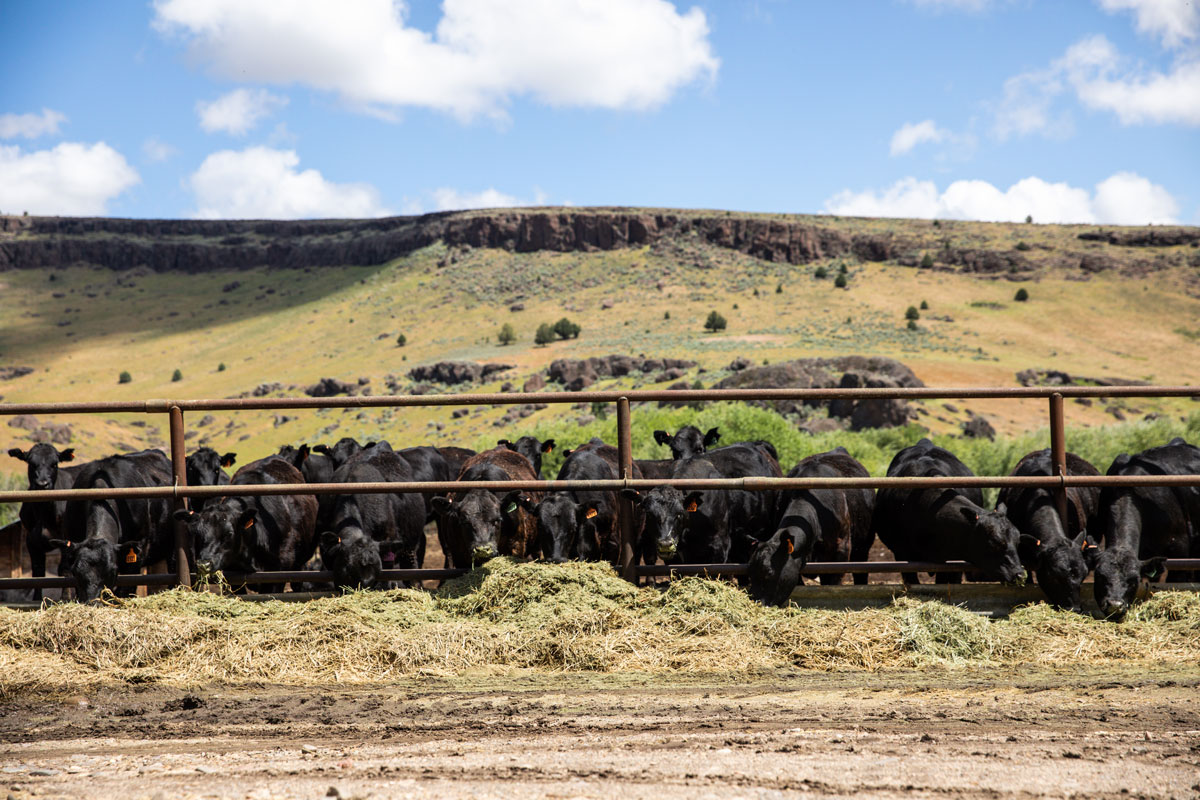
The better the cattle got, the more David could see to do.
When he started weaning calves between 500 and 700 pounds, his only thought was “how to get rid of those five weights and make them seven.”
This year marks 17 sets of “program” calves. Their use of AngusSource™ evolved to enthusiasm for AngusLink. They do it all: source-and-age verified (SAV), non-hormone-treated cattle (NHTC), NEVEREVER3 (NE3), top calf management, cattle care and handling, and the Angus Genetic Merit scorecard. All that along with certification on Global Animal Partnership level 4 (GAP-4).
Calves sell through Western Video in mid-July. Out of 710 lots sold, David searched to see who was doing what they do: “There were five lots that had the programs we used, and all five of them were ours.”
It’s more than programs that keep building demand for their calves.
“Our buyers need to know our faces,” David says. “And we need to know those people and make contact with them personally.”
Every summer they look forward to their vacation to the Western Video sale in Reno, Nev. It’s just one way they stay connected.
As Ann says, “David’s always looking for a newer, better mousetrap.”
If they’re lucky enough to get away for Angus Convention in the fall, they’ll drive and stop by feedyards on the way to see how their calves are performing.
Limiting bulls to the top, balanced 10% lifted quality grades along with ranch performance and growth. For more than a decade, Select cattle have been gone and replaced with Choice and even more Prime. In 2018 two loads of steers graded 35% Choice and 65% Prime, with only 27% yield grade 4.
He asks about their health, too. Raising cattle in wide open country favors healthy calves, as does a good vaccine program. But when one does get sick and needs some help, their son Carlen will use essential oils to treat it, naturally.
Every year momentum is gaining as they aim to get better.
“You have to be driven by something,” David says. Defining goals and gaining the knowledge it takes to achieve them matters. “But it’s what you learned after you know it all that really counts.”
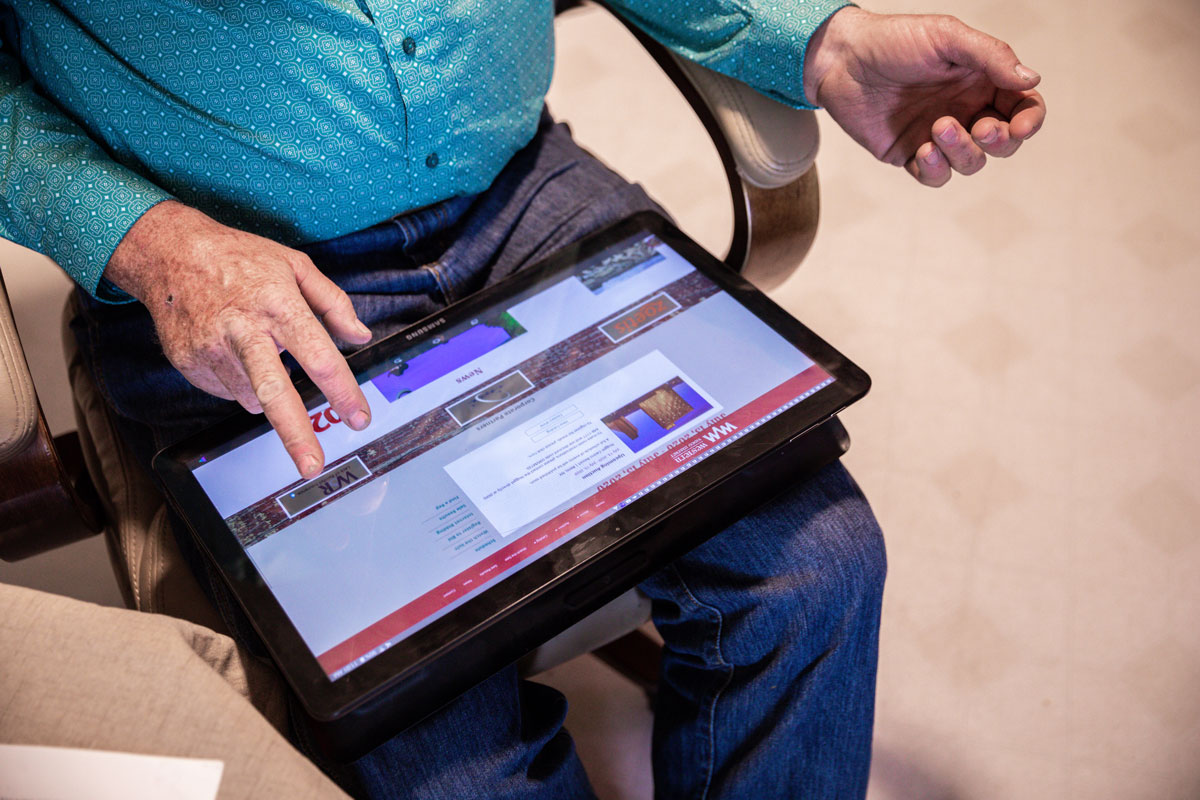
Leaving it better
In the vast and rugged ranges where their cattle roam, juniper trees and sage brush grow like a weedy blanket across the land, stealing from productive forages they crowd out.
The family started to cut down the trees themselves, but soon found a conservation plan through Natural Resources Conservation Service (NRCS). Now the ranch hires crews to cut down the junipers, which the Rutans later pile and burn. It doesn’t take long to see the effects.
“There are springs and natural grasses coming back, where we’ve cut all those trees and they’re not taking all that water,” David says. “It’s a big-picture thing. But with our neighbors also doing this, I think we’re achieving some good things for the land.”
They’re even seeing sage grouse, some for the first time.
That’s good for livestock, too, and grazing keeps the grass rejuvenated like a mown lawn. It offers no chance for invasive plants and their cycles of dead brush that feed wildfires.
“If you just let these plants do nothing,” David says, “then they’re going to do nothing. These cows are a way to utilize the ground and keep it as good as it can be and not a fire hazard.”
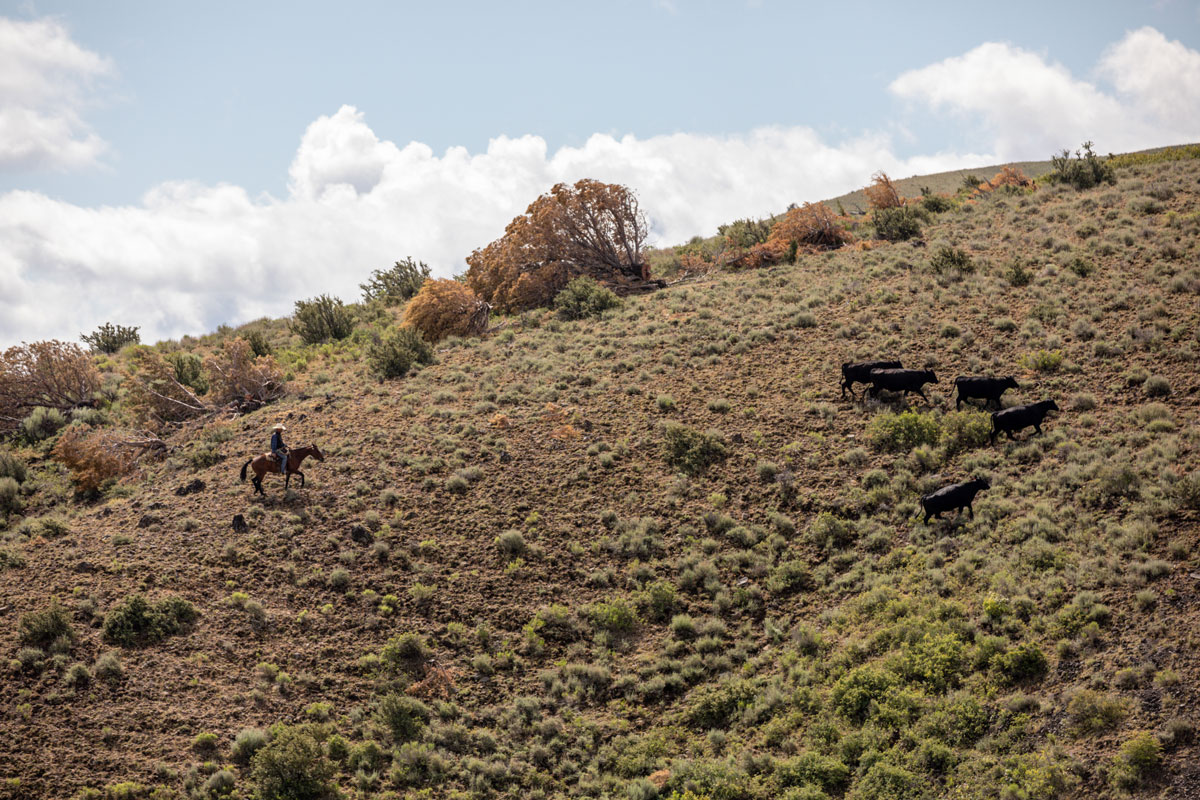
Faith everlasting
David never thought he would see as much change as his grandfather’s generation, but now says he’s “not so sure.”
“If you’re not the lead dog, the view never changes,” something David learned from an old coach.
For a place with no cell phone service and only recently reliable internet access, the ranch is progressive.
“What we can do on a phone or a tablet is incredible,” he says. “We can find machinery all over the United States. We can sell cattle on it. We can buy cattle on it. We can buy equipment. We can do everything if we choose to do so.”
And that’s David; “He always has a plan,” Ann says. “That’s one of the things that I love the most.”
“We have as good a life as anybody could have,” David says. “I feel very blessed to be able to do what I do every day as a choice and not as, ‘well, this is where I landed.’ It’s a choice to do what we do.”
Every meal and time spent together is a reminder of why they chose this path. “It’s these little guys,” David nods to his youngest grandson sitting on his lap.
“I think the most important part of being able to raise our kids on the ranch,” Ann says, “is to give them a sense of work ethic and a sense of compassion for animals. And to learn the importance that animals play in our world.”
It’s not so much about leaving a legacy for someday, but each day leaving the world better than yesterday.
This story originally published in the Angus Journal.

You May Also Like…
From Modest Beginnings to Excellence
Gilchrist Farm recently received the 2024 Certified Angus Beef Canadian Commitment to Excellence award. This prestigious honor recognizes their exceptional achievements in high-quality Angus genetics and management. Over the years, they have transformed their operation by embracing superior Angus genetics. Their commitment to high standards and innovative practices has distinguished them as a model of excellence in the industry.
From White House to Farmhouse
At Pleasant Valley Farm in Brookville, MD, four generations of the Stabler family have blended tradition and innovation to create a thriving, diversified Angus operation. Honored with the Ambassador Award at the 2024 Certified Angus Beef (CAB) Annual Conference, the Stablers exemplify a commitment to sustainable farming, community engagement and educational outreach. Their significant contributions to the hosting on behalf of the CAB brand highlight their commitment and play a key role in receiving this award.
What’s Good for the Cattle, Is Good for the Wetlands
JY Ferry & Son, Inc., named the 2024 Certified Angus Beef Sustainability Award winner, exemplifies how sustainability in agriculture can bridge quality beef production, land stewardship, and wildlife management. At JY Ferry & Son, what’s good for the cattle is good for the wetlands—and good for the next generation of this multi-generational family business.



